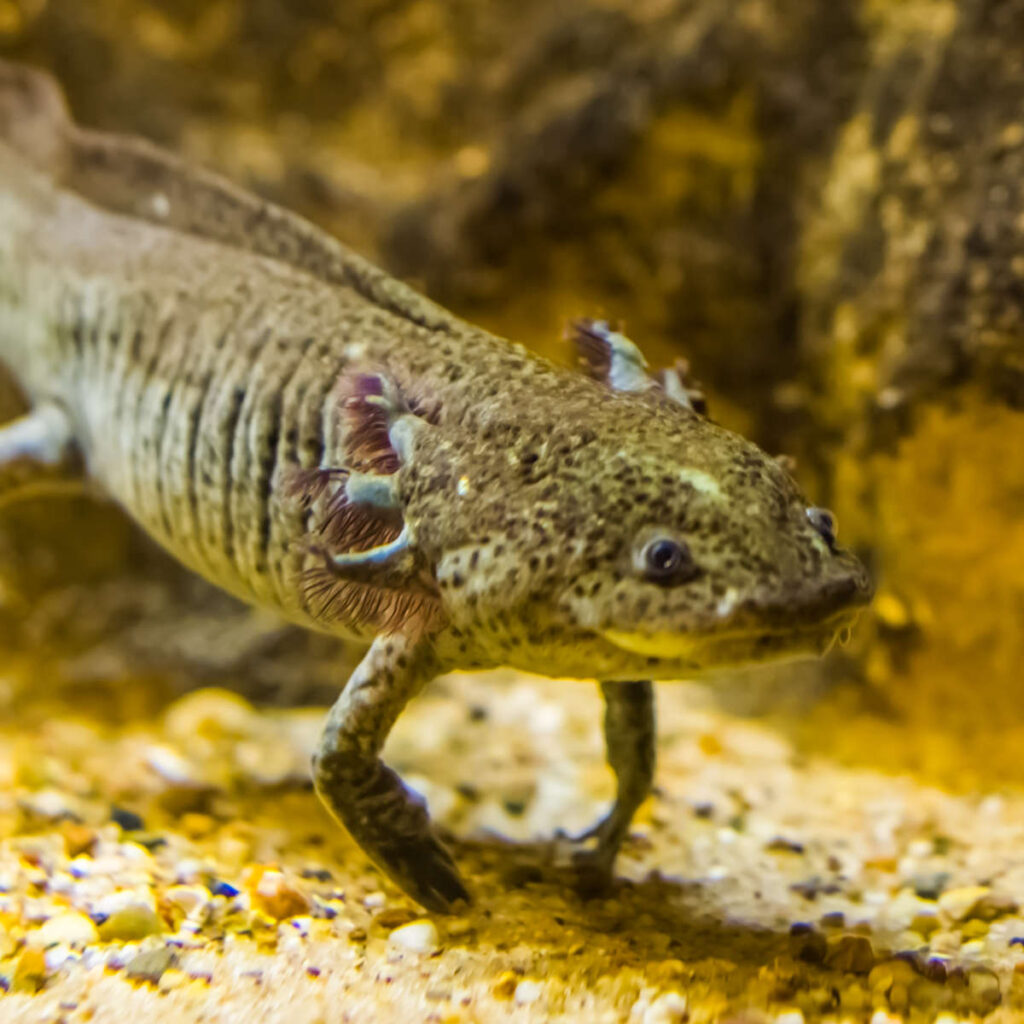Last Reviewed and Updated on November 1, 2022
Axolotls, also known as the Mexican walking fish, are one of the most interesting amphibians out there. Originally found in Mexico’s freshwaters and lakes, this animal has become a popular pet as it’s a hardy and easy-to-care-for animal. Read some of the most interesting facts about the axolotl and get to know this unique species a little bit more.

1. Unlike other amphibians, axolotls reach adulthood without metamorphosis
We’re starting this list of facts about the axolotl with something that sets this animal apart from other amphibians. When it comes to amphibians they usually need to undergo metamorphosis to reach adulthood. During this process, they develop the organs and appendages needed to transition from water to land. Axolotls can stay the same as they were from the larval stage, and they continue with their aquatic life. They don’t need to go through the process of metamorphosis to complete their life cycle.
Fun fact: while they generally don’t go through the process of metamorphosis naturally, occasionally, some will. On top of that, the process can be triggered artificially.
2. Their signature feathery-looking head ornaments are their gills
One of the most distinctive features of axolotls is their head ornaments which are their external gills. They keep them throughout their life because they don’t undergo metamorphosis.
3. While widespread in captivity, they are endangered in the wild
This species can be found in several lakes in the Mexico city area. Some lakes were drained in the past, destroying the natural habitat of axolotls. Today, the greatest threat is the pollution of water and invasive species. Axolotls were near extinction in nature and are critically endangered in general.
4. Axolotls can regenerate their limbs, gills, their eyes, and even parts of their brain
One of the most impressive facts about the axolotl is their regenerative ability. They have an extraordinary healing ability that is extensively researched. In addition to being able to regenerate various parts of their body, they are also capable of accepting transplants from other individuals and bringing them to full functionality.
They have also been known to repair a damaged limb and grow a new one in addition to that, leaving them with an additional appendage.
Other amphibians lose much of their regeneration ability when they undergo metamorphosis.
5. Axolotls are carnivorous
They feed on small fish, mollusks, worms, and arthropods. They locate food by smell.
6. They feed by using suction
While they do have teeth, they don’t chew their food. They can’t tear their food with their teeth either. Axolotls feed by sucking the water into their mouths; as they do, their prey gets sucked in as well, and they swallow it whole.
7. Males and females are easy to identify even if they look pretty similar
The cloaca (cavity at the end of the digestive tract) of the male has a noticeably longer slit length than that of a female, and this is the main way to tell them apart. The front legs of the male are also wider than that of the female.
A female is usually longer and wider than a male.
8. They come in many colors
The most popular in captivity is white, but you will rarely find a white one in nature. The most common color in the wild is brown or tan with gold speckles and an olive-colored undertone.
Axolotls have four pigmentation genes, creating a variety of color variants.
The most common color variants are leucitic (pale pink with black eyes), xanthic (grey with black eyes), albino (pale pink with red eyes), melanoid (black), and golden albino (golden with gold eyes).
9. They can shift their color hue to camouflage
Axolotls can shit their hue, making it a few shades lighter or darker to camouflage.
10. They primarily use gills for breathing but can use their lungs too
They use their external gills for respirations but can also gulp air from the surface to provide oxygen to their lungs.
You might also like: 100 weirdest facts about animals
